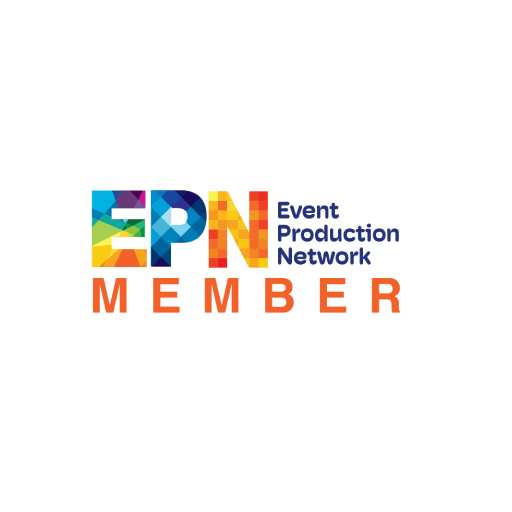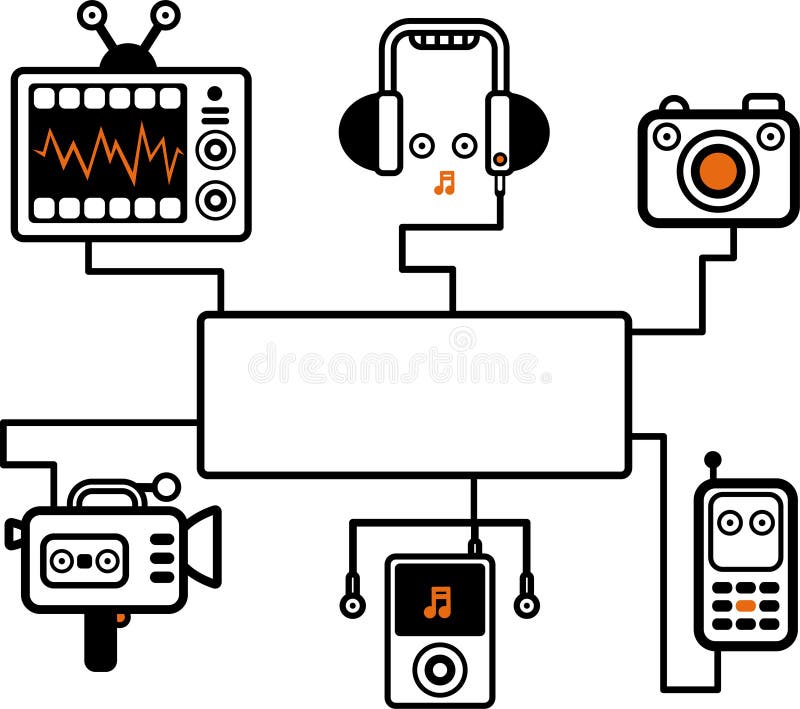How audio visual charlotte nc elevates venue lighting for audience engagement
Recognizing the Incorporation of Audio Visual Innovation in Today's Educational Environments
The integration of audio-visual technology in educational settings has transformed the training and learning process. Educators currently have accessibility to devices that accommodate various learning designs, boosting trainee interaction and collaboration. The incorporation of these technologies presents both possibilities and difficulties. Comprehending how to successfully apply these tools is essential. What strategies can instructors employ to make the most of the benefits of audio-visual modern technology in their class?
The Evolution of Audio-Visual Modern Technology in Education And Learning
As educational demands developed over the decades, audio-visual innovation undertook considerable transformations that improved the discovering setting. Devices such as film projectors and slide programs were the main ways of integrating visual elements into class. These early technologies supplied teachers with the ability to existing info dynamically, yet they were limited in access and interactivity.
With the advent of video cassette recorders in the 1970s, classrooms started to integrate taped lessons, widening the scope of educational sources. The intro of computers in the 1980s further changed this landscape, permitting for the production of multimedia presentations and interactive learning experiences.
The rise of the web in the 1990s marked a crucial minute, enabling real-time access to a riches of audio-visual materials. Today, electronic tools such as interactive white boards and on the internet understanding platforms remain to enhance the academic experience, fostering interaction and partnership amongst students.
Advantages of Audio-Visual Equipment for Diverse Discovering Styles
Audio-visual devices play a necessary function in catering to diverse understanding designs by boosting visual knowing and improving auditory engagement. By incorporating images, video clips, and sound, these modern technologies develop an even more inclusive academic atmosphere. This multifaceted technique enables educators to deal with the diverse preferences and requirements of students efficiently.
Enhancing Visual Learning
Involvement in the learning process is substantially enhanced with the use of audio-visual devices, dealing with numerous learning styles. These devices, such as videos, infographics, and interactive presentations, give aesthetic stimuli that assist understanding and retention. Visual students, specifically, gain from the incorporation of photos and computer animations, which can simplify complicated principles and boost understanding. Additionally, audio-visual sources can show real-world applications, making finding out a lot more appropriate and interesting. By incorporating color, motion, and sound, educators can produce a vibrant discovering atmosphere that records trainees' interest and promotes much deeper cognitive connections. Eventually, the calculated use audio-visual modern technology not just sustains aesthetic discovering yet likewise enriches the general instructional experience for diverse students.
Improving Auditory Involvement
A considerable benefit of incorporating audio-visual tools in education is their capacity to enhance auditory interaction among students. These tools, which incorporate multimedia presentations, podcasts, and interactive sound components, accommodate numerous discovering styles, specifically benefiting auditory learners (audio visual charlotte nc). By integrating audio and narration, teachers can develop immersive experiences that record students' interest and reinforce understanding. This engagement is necessary, as it fosters a deeper understanding of the material and promotes retention. Furthermore, audio-visual tools can help with joint knowing settings, encouraging students to join conversations and share their understandings. Eventually, the unification of audio-visual technology not just supports auditory interaction but also enhances the overall educational experience, making finding out more dynamic and efficient for all pupils
Enhancing Interaction Via Interactive Learning

Additionally, gamification aspects, such as quizzes and simulations, can boost inspiration and retention, making learning more satisfying and effective. These approaches not just boost cognitive engagement however additionally satisfy diverse knowing designs, ensuring that all pupils can participate meaningfully. Because of this, interactive understanding environments promote a sense of neighborhood and belonging, inevitably bring about enhanced scholastic end results. Via the integration of audio visual modern technology, instructors can transform typical classrooms into vivid areas where trainees thrive and actively form their instructional journeys.
Bridging Theory and Exercise With Multimedia Resources
Multimedia sources offer as an essential link between theoretical ideas and functional application in educational settings. By boosting interaction, promoting collective understanding experiences, and supporting varied discovering styles, these tools create a more inclusive and vibrant discovering setting - audio visual charlotte nc. This strategy not only fosters deeper understanding yet also prepares students for real-world obstacles

Enhancing Engagement Through Multimedia
Involvement in academic settings substantially increases when trainers integrate multimedia sources right into their mentor approaches. Using videos, podcasts, and interactive discussions improves the learning experience, allowing trainees to get in touch with the material on multiple degrees. Multimedia resources provide to various finding out designs, giving visual, auditory, and kinesthetic stimuli that can hold pupils' focus better than conventional lecture methods. In addition, these resources can simplify intricate concepts, making them a lot more available and memorable. By integrating multimedia, instructors can produce a dynamic classroom setting that cultivates inquisitiveness and inspires learners. Inevitably, the strategic use audio-visual modern technology serves to connect the space between theoretical knowledge and useful application, enhancing the academic experience for both trainers and students.
Helping With Collaborative Knowing Experiences
Various researches show that joint understanding experiences substantially boost student end results when incorporated with multimedia sources. Multimedia devices facilitate interaction among pupils, permitting them to involve in analytical and important believing collectively. By using video clip conferencing, collaborative systems, and interactive presentations, instructors create settings helpful to team effort and shared knowing. These technologies allow pupils to connect their concepts effectively and obtain prompt feedback, cultivating a much deeper understanding of the subject. Additionally, multimedia resources can offer intricate principles in more absorbable layouts, advertising conversation and cooperation. Therefore, the combination of collaborative knowing and audio-visual innovation not only enriches the academic experience yet additionally prepares trainees for real-world synergy dynamics, stressing the relevance of participation and collective expertise building and construction.
Supporting Diverse Learning Styles
While typical mentor methods usually cater to a minimal variety of learning choices, the integration of audio-visual technology supplies a much more comprehensive method to education and learning. By employing multimedia sources such as videos, interactive simulations, and digital discussions, teachers can deal with numerous finding out designs, consisting of aesthetic, auditory, and kinesthetic. This flexibility enables separated guideline, making it possible for students to involve with content in methods that resonate with their individual preferences. Furthermore, audio-visual devices can facilitate much deeper understanding by offering numerous depictions of intricate ideas. As a result, students who may deal with standard approaches can discover alternate paths to success, fostering an extra equitable understanding atmosphere that supports scholastic achievement for all learners.
Challenges in Executing Audio-Visual Innovation
Audio-visual innovation holds wonderful promise for enhancing educational experiences, its execution typically comes across significant obstacles. One key problem is the financial burden associated with getting and maintaining such tools, which can stress budgets, especially in underfunded institutions. Additionally, inadequate training for instructors can impede efficient combination, leaving here them ill-prepared to use the innovation fully. Technical concerns, such as software application malfunctions and compatibility troubles, may additionally disrupt lessons and discourage both educators and trainees. Varying degrees of trainee accessibility to technology outside the classroom can produce disparities in discovering opportunities. Ultimately, the capacity for over-reliance on innovation might diminish necessary training methods, ultimately restricting the educational experience. Addressing these obstacles needs a detailed approach, including sufficient funding, specialist growth, and fair access to resources, to ensure that audio-visual technology can be leveraged successfully in today's educational setups.
Finest Practices for Integrating Modern Technology in the Classroom

Furthermore, promoting an interactive atmosphere through joint devices urges pupil engagement and participation. Using diverse audio-visual sources accommodates numerous learning styles, accommodating aesthetic, acoustic, and kinesthetic learners. Frequently evaluating the impact of modern technology on trainee knowing helps instructors improve their techniques and adapt to altering requirements. Ultimately, involving students in the option of innovation advertises ownership and motivation. By sticking to these finest methods, educators can produce a vibrant class environment that efficiently integrates technology and improves the academic experience for all pupils.
The Future of Audio-Visual Technology in Education And Learning
As classrooms significantly accept technology, the landscape of audio-visual devices in education remains to develop (audio visual charlotte nc). Future advancements are anticipated to concentrate on better interactivity and personalization, enabling educators to customize discovering experiences to specific student requirements. Advancements such as enhanced reality (AR) and online reality (VIRTUAL REALITY) will likely offer immersive learning settings, boosting pupil interaction and understanding
Furthermore, artificial intelligence (AI) is poised to play a significant function in audio-visual technology by providing real-time feedback and adaptive knowing paths. This integration might help teachers recognize and address student obstacles more effectively. Cloud-based systems will certainly help with easier accessibility to sources and partnership amongst students and instructors, regardless of location.
In addition to these technological advancements, specialist development for educators will be vital, ensuring they are outfitted to make use of these devices successfully. In general, the future of audio-visual modern technology in education and learning assures to create more vibrant, comprehensive, and impactful learning experiences.
Regularly Asked Inquiries
Exactly How Can Educators Select the Right Audio-Visual Tools for Their Class?
Selecting appropriate audio-visual devices needs educators to assess their educational objectives, think about student requirements, evaluate offered modern technology, and look for suggestions from peers or specialists, making sure tools successfully boost discovering and interaction within their particular classroom atmosphere.
What Budget plan Considerations Are There for Executing Audio-Visual Innovation?
Budget plan considerations for applying audio-visual innovation consist of first acquisition expenses, maintenance expenses, training for staff, and possible software application licensing fees. In addition, long-term investment in updates and replacements should additionally be factored into financial planning.
Are There Particular Training Resources for Educators on Audio-Visual Equipment?
Numerous organizations use training resources for teachers on audio-visual devices, consisting of on the internet programs, workshops, and educational guides. These sources intend to enhance educators' abilities and self-confidence in successfully integrating modern technology into their mentor methods.
Just how Do We Determine the Effectiveness of Audio-Visual Modern Technology in Understanding?
Measuring the efficiency of audio-visual innovation in discovering involves examining trainee involvement, understanding, retention rates, and overall scholastic efficiency. Studies, analyses, and observational research studies can give useful insights into its influence on educational outcomes.
What Are Common False Impressions Concerning Audio-Visual Innovation in Education?
Common mistaken beliefs concerning audio-visual modern technology in education include the idea that it assures involvement and learning outcomes, as well as the presumption that all students benefit similarly, neglecting private understanding choices and requirements.